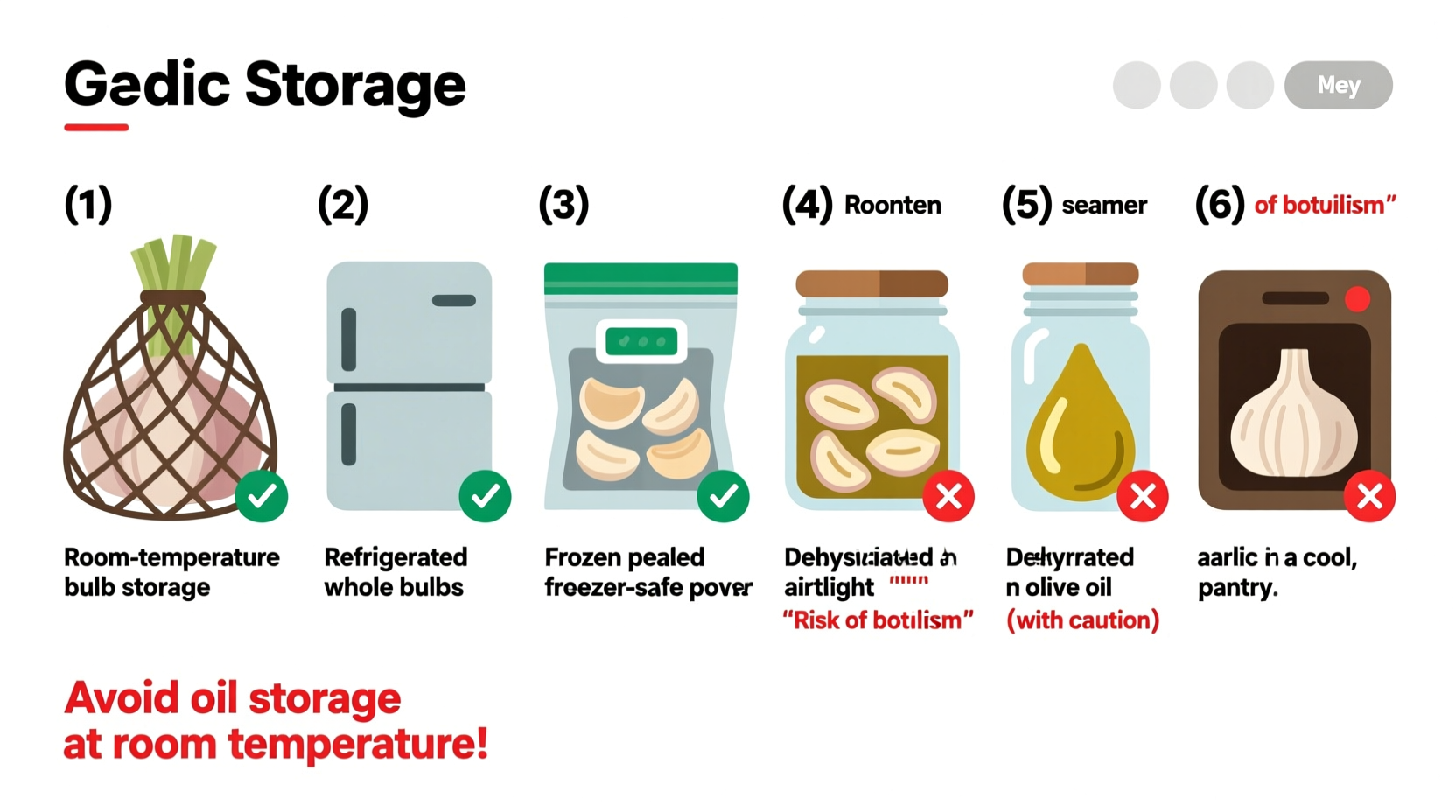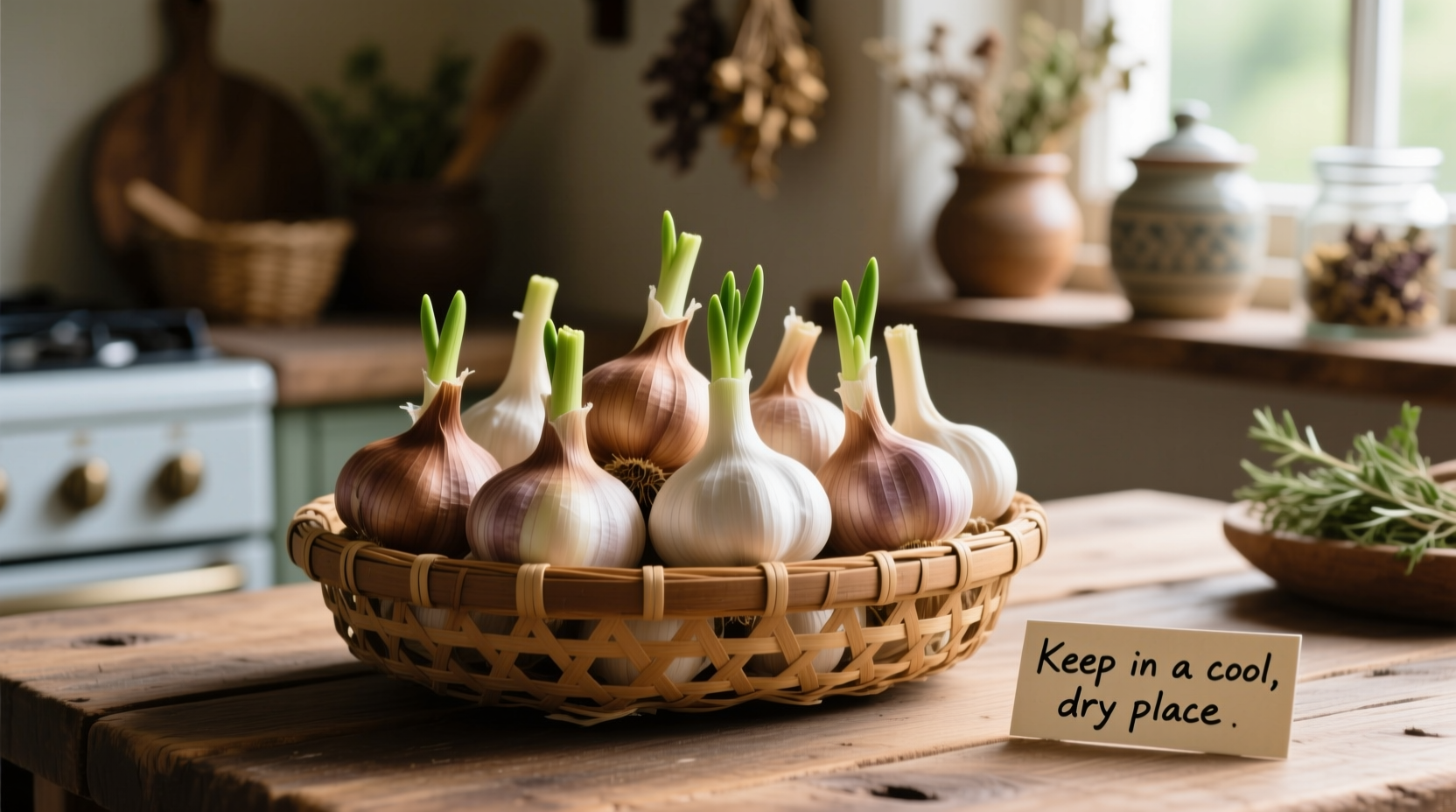Garlic transforms ordinary dishes into culinary masterpieces, but nothing ruins the experience like finding sprouted, moldy cloves when you're ready to cook. As a chef who's worked with garlic in professional kitchens for over 15 years, I've tested every storage method imaginable. The good news? Keeping garlic fresh requires no special equipment—just understanding its basic needs. In this guide, you'll discover scientifically backed storage techniques that maintain garlic's flavor and potency for months, reducing waste and ensuring you always have fresh garlic ready for your next meal.
Understanding Garlic's Natural Preservation Needs
Garlic evolved as a hardy plant that survives harsh conditions, but modern storage often works against its natural preservation mechanisms. Unlike many vegetables, garlic enters dormancy after harvest, which explains why proper storage can extend its life significantly. The key factors affecting garlic longevity are:
- Temperature: 60-65°F (15-18°C) is ideal—warmer temperatures trigger sprouting, while colder temperatures cause premature deterioration
- Humidity: 60-70% prevents both drying out and mold growth
- Air circulation: Essential to prevent moisture buildup that leads to spoilage
- Light exposure: Direct light accelerates sprouting and flavor degradation
According to research from the University of California Postharvest Technology Center, improper storage accounts for over 30% of household garlic waste. Most people make the critical mistake of storing garlic in the refrigerator, which actually shortens its shelf life by triggering enzymatic changes that alter flavor and texture.
Choosing the Right Storage Method for Your Situation
Room Temperature Storage for Whole Bulbs
This is the gold standard for unpeeled garlic bulbs. Follow these steps:
- Cure garlic for 2-3 weeks in a warm, dry, well-ventilated space if you've harvested it yourself
- Remove excess dirt but don't wash the bulbs
- Store in a mesh bag, wire basket, or terra cotta garlic keeper
- Place in a dark cupboard away from heat sources like stoves or dishwashers
- Maintain consistent temperature between 60-65°F (15-18°C)
This method keeps garlic fresh for 3-5 months. The National Center for Home Food Preservation confirms that proper room temperature storage preserves both flavor compounds and nutritional value better than refrigeration.
Refrigeration Techniques for Partial Bulbs and Cloves
Once you've broken the bulb or peeled cloves, storage requirements change significantly:
| Garlic Form | Storage Method | Shelf Life | Critical Tips |
|---|---|---|---|
| Separated but unpeeled cloves | Open container in pantry | 7-10 days | Keep away from onions which accelerate sprouting |
| Peeled cloves | Airtight container in refrigerator | 10-14 days | Place paper towel in container to absorb moisture |
| Chopped/minced garlic | Submerged in olive oil, refrigerated | 5-7 days | Never store at room temperature (botulism risk) |
Important safety note: The FDA warns that storing garlic in oil at room temperature creates ideal conditions for botulism toxin production. Always refrigerate garlic-in-oil mixtures and use within one week.
Long-Term Preservation Methods
When you have a garlic surplus, these professional techniques preserve flavor for months:
Freezing Garlic
Freezing maintains garlic's flavor compounds better than most preservation methods. Two effective approaches:
- Whole cloves: Peel cloves, place in freezer bag with air removed, lasts 10-12 months
- Pre-minced: Freeze minced garlic in ice cube trays with olive oil, then transfer to freezer bags
Drying and Dehydrating
Dried garlic retains about 70% of its allicin content (the compound responsible for health benefits). For best results:
- Air-dry whole bulbs in mesh bags for 3-4 weeks
- Dehydrate sliced cloves at 135°F (57°C) for 8-10 hours
- Store dried garlic in airtight containers away from light

Troubleshooting Common Garlic Storage Problems
Sprouting Garlic: Causes and Solutions
Sprouting indicates garlic is trying to grow, usually triggered by warm temperatures or high humidity. While sprouted garlic is still safe to eat, the green sprout can impart a bitter flavor. To address sprouting:
- Remove the green sprout before using
- Store sprouted bulbs in the refrigerator to slow further growth
- Use sprouted garlic immediately in cooked dishes where bitterness is less noticeable
According to Cornell University's College of Agriculture and Life Sciences, garlic stored below 40°F (4°C) will not sprout, but this temperature range compromises flavor quality for whole bulbs.
Mold and Texture Issues
Mold typically appears when garlic is exposed to moisture. If you spot mold:
- Discard soft, mushy cloves immediately
- For minor surface mold on firm cloves, cut away affected area plus 1 inch around it
- Never wash garlic before storage—moisture accelerates spoilage
Pro Tips for Maximizing Garlic Freshness
- Buy wisely: Choose firm bulbs with tight skins and no green sprouts
- Separate carefully: Break off only what you'll use within a week
- Avoid plastic: Never store garlic in sealed plastic bags which trap moisture
- Keep away from potatoes: Both release gases that accelerate each other's spoilage
- Test freshness: Fresh garlic should feel heavy for its size with no soft spots
Professional kitchens follow the "first in, first out" principle with garlic—rotate your stock so older bulbs get used first. This simple practice reduces waste by up to 40% according to industry surveys from the National Association of College and University Food Services.
When to Toss Garlic: Safety Guidelines
Garlic rarely becomes dangerous, but these signs indicate it's time to discard:
- Soft, mushy texture throughout the clove
- Extensive mold growth (more than surface level)
- Unpleasant sour or fermented smell
- Significant discoloration (yellow, brown, or black spots)
Remember that garlic naturally changes color when cooked or stored—slight blue or green hues in pickled garlic are normal and safe.











 浙公网安备
33010002000092号
浙公网安备
33010002000092号 浙B2-20120091-4
浙B2-20120091-4